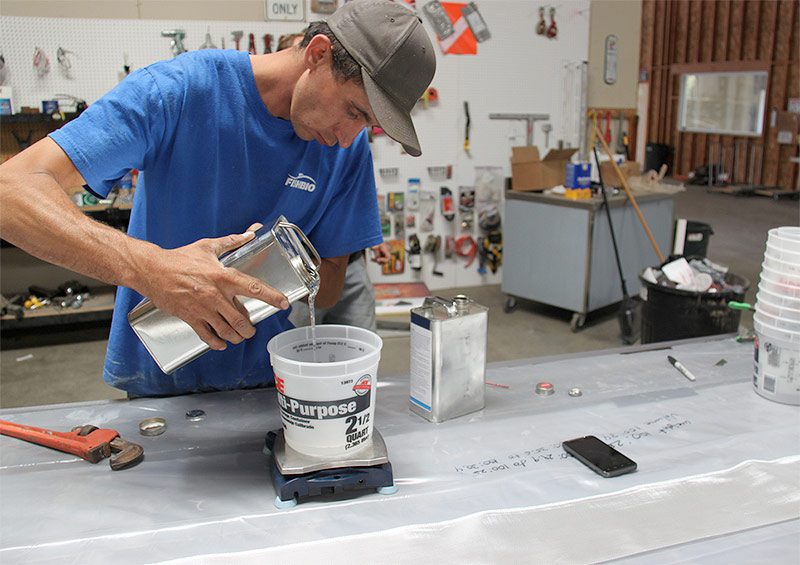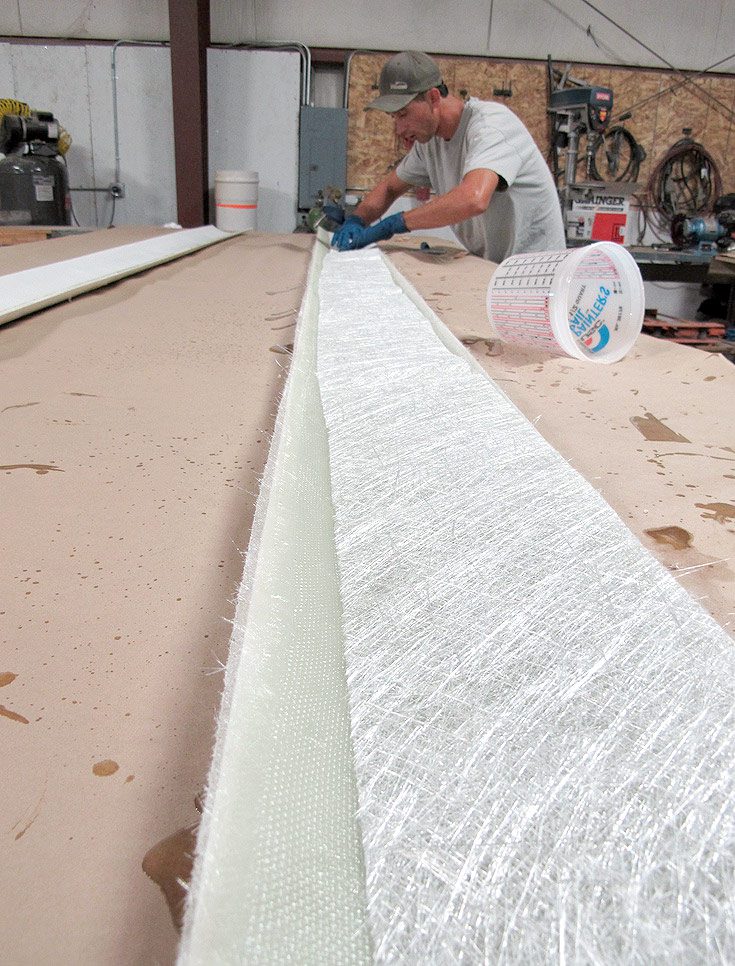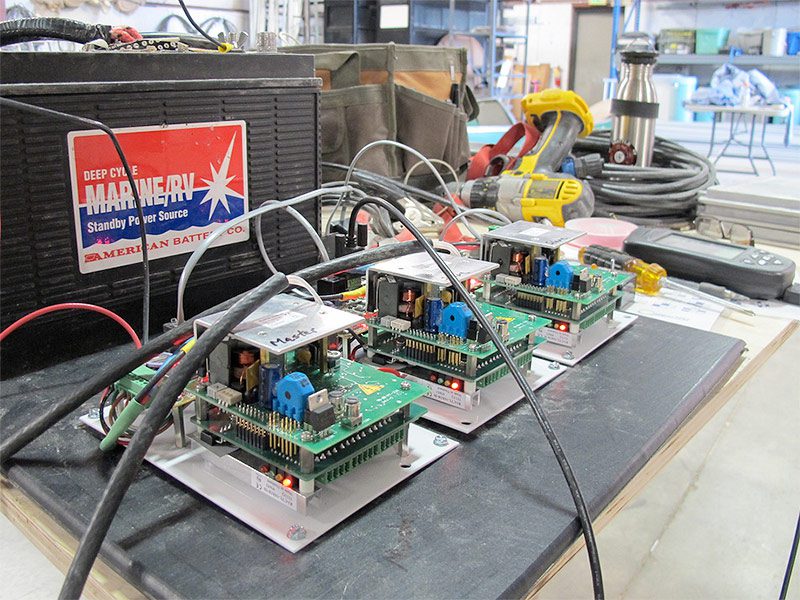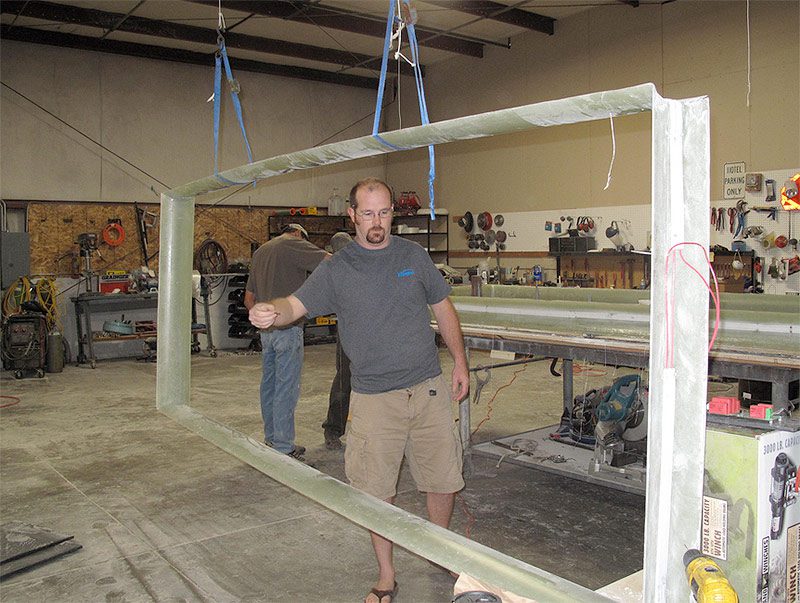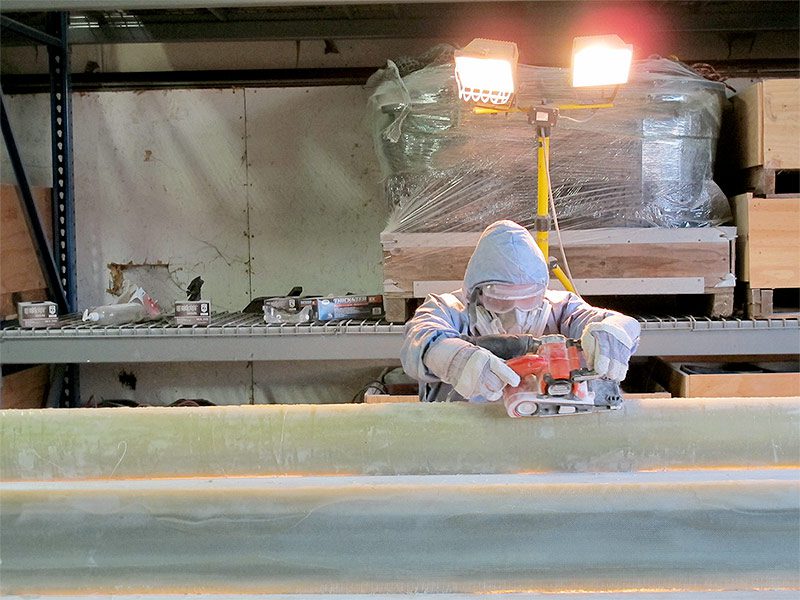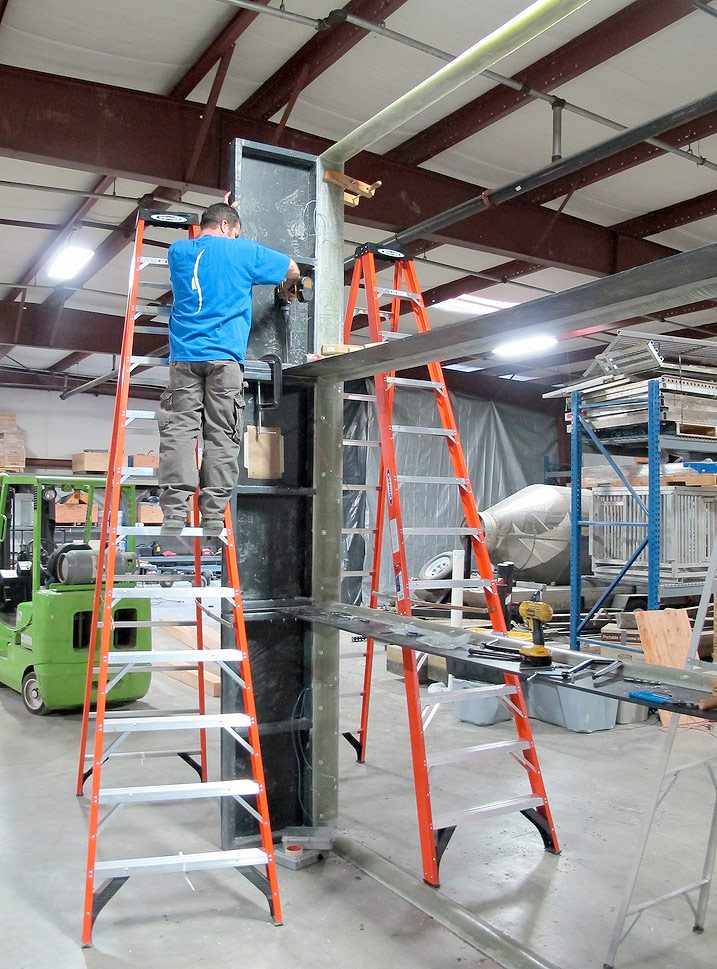Friday September 21, 2012
 Last month we mentioned we were in the process of building a large, remote antenna array designed to detect and record passages of fishes and turtles tagged with Passive Integrated Transponder (PIT) tags. As our FABLAB crew can attest, many hours were spent constructing these supersized antennas.
Last month we mentioned we were in the process of building a large, remote antenna array designed to detect and record passages of fishes and turtles tagged with Passive Integrated Transponder (PIT) tags. As our FABLAB crew can attest, many hours were spent constructing these supersized antennas.
With required dimensions in hand, we started by constructing the fiberglass shell. Since this array of three antennas will have to withstand high flows within the diversion tunnel, we used a curved mold to make the cross members of the antennas as hydrodynamic as possible. Once the rectangular shells of the antennas were produced, the electrical wiring was added. It only takes a couple wraps of a small gauge copper wire to produce the magnetic field required for charging the small PIT tag transmitters. After carefully positioning the antenna wire, we connected it to a tuner and tag reader from Oregon RFID, and then tested it for function and tag detection rate. With the electronics completed, more layers of fiberglass and Kevlar® (a high-strength, synthetic material) were applied and sanded until the desired shape and strength was achieved. Now that they are fully assembled and tuned, the three antennas can detect and record any tag passing through the center of the array. Watch for an update once this antenna is installed inside the subterranean tunnel and exposed to the full force of winter flows.
